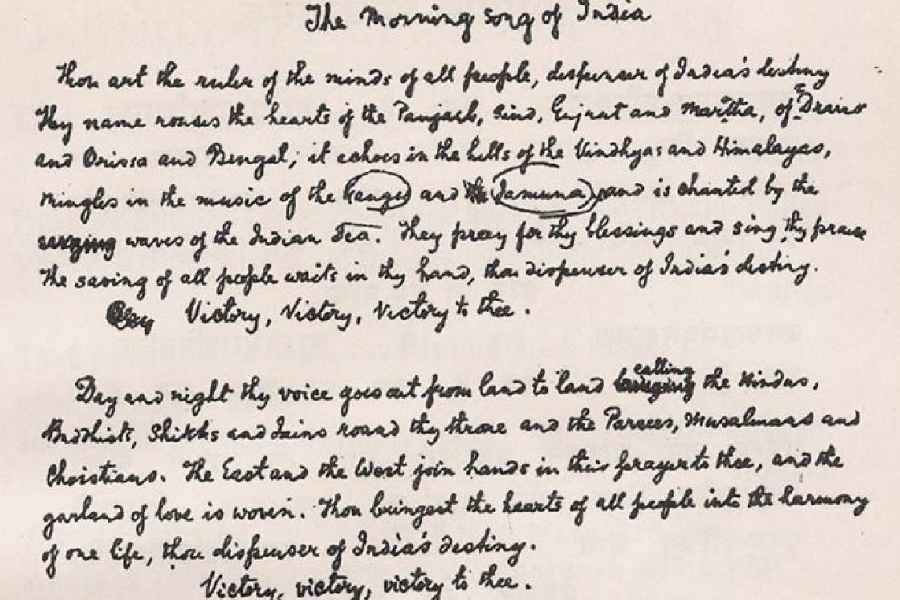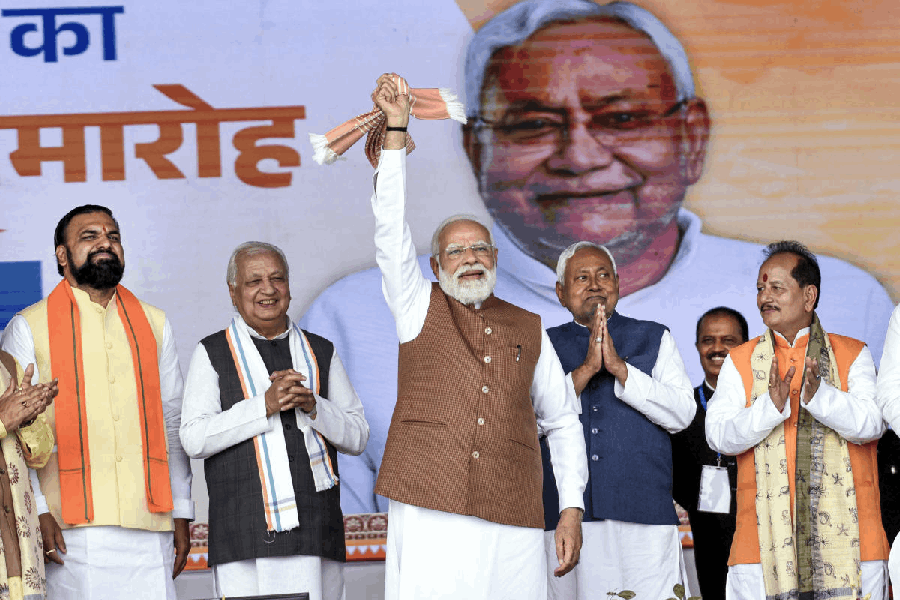Book: SONG OF INDIA: A STUDY OF THE NATIONAL ANTHEM
Author: Rudrangshu Mukherjee
Published by: Aleph
Price: Rs 399
In the Song of India, Rudrangshu Mukherjee briefly surveys the history of the song, “Jana Gana Mana”, composed by Rabindranath Tagore, the first stanza of which is the national anthem of India. The short book starts with a sketch of the life and the works of Tagore, discusses the content and the history of the song, and contains ‘coda’, including the full text of the song in original Bengali as well as Roman and Devanagari transliterations of it, an English translation, and the facsimile of another — both by Tagore himself and a QR code to listen to Tagore’s own recitation of the first stanza. The contents are not new for those familiar with Tagore and his creations but can be a handy introduction for others, especially those who subscribe to myths, such as the song being originally composed in honour of the British emperor, George V. Following the established works of Prasanta Kumar Pal and Prabodh Chandra Sen, Mukherjee demonstrates how Tagore had composed this song in honour of a force superior to the vanity of any royalty, out of annoyance at being asked by a Congress moderate to compose a song in honour of the British king. The 1911 session of Congress at Calcutta, thus, had many songs performed, including both Tagore’s patriotic song and a Hindi song in honour of George V. It would indeed have been hilarious if the song, which celebrated a compassionate mother (snahamayimata) in its fourth stanza, was composed in honour of a British monarch.
Although it is a patriotic song, “Jana Gana Mana” does not directly celebrate the nation but the ‘dispenser of India’s destiny’, an ungendered, divine figure reflecting Tagore’s Upanishadic piety. That is why even the reference to the compassionate mother did not turn the song into another among the many celebrations of the nation as a Mother Goddess, including “Vande Mataram” by Bankim Chandra Chattopadhyay, the only other close contender to be the national anthem, which, nevertheless, addressed Bengal rather than India. No wonder Tagore’s song would later be published as a Brahmo Sangeet in the Tattwabodhini Patrika, the mouthpiece of the Adi Brahmo Samaj, which Tagore himself edited at that time.
Is a devotional song then a suitable national anthem for India? Mukherjee notes that when Jawaharlal Nehru had asked Tagore to compose a national anthem for India and the poet had agreed, “Jana Gana Mana” was clearly not their first choice. Subhas Chandra Bose had adopted a Hindustani adaptation of the song rendered by Abid Hasan and composed by Mumtaz Hussain and Ram Singh Thakur as the national anthem of the Indian National Army. Independent India honoured Bose’s legacy by confirming this choice. This book defends this choice compellingly by outlining how “Jana Gana Mana”, partly influenced by “Namo Hindustan” composed by Sarala Devi (Tagore’s niece), echoes the ideals of the Indian nation-state, especially its unity in diversity, situating the song among Tagore’s other contemporary works like the poem, “Bharat-tirtha”, the novel, Gora, the play, Raja, and a number of essays. The book is missing the first line of the fourth stanza in the printed Bengali text of the song — a printing error that must be corrected in the next edition.










